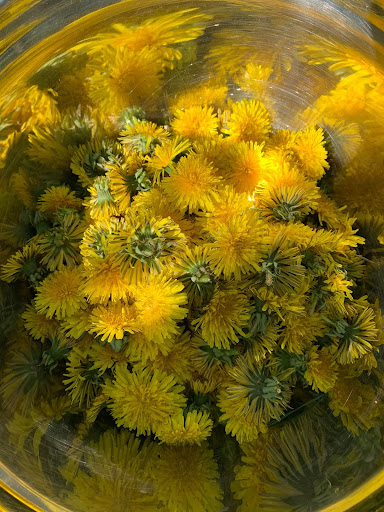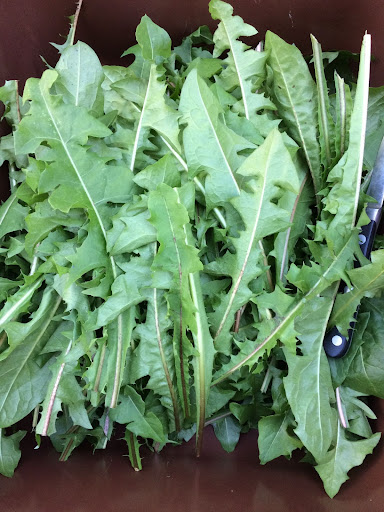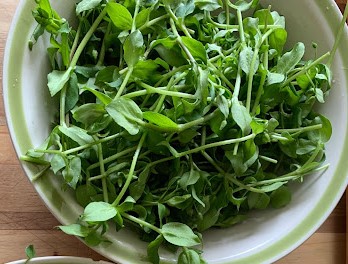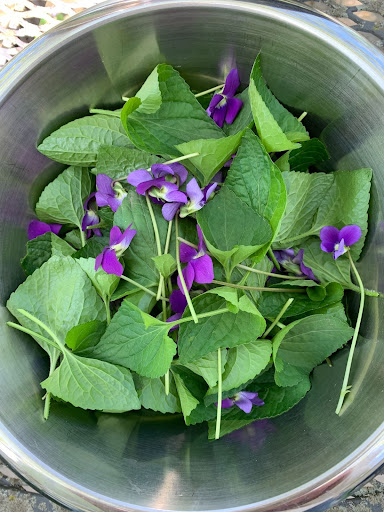



Left to right, Dandelion blossoms, dandelion greens, chickweed, violets - Photos by Karin Pagel-Meiners
BY KARIN PAGEL-MEINERS, Sierra Club Kansas Chapter Vice-Chair
A waypoint isn’t always public. It can be a private space for pollinators or a garden that calms you, feeds you, or gives you joy. Your yard may be highly cultivated but you can’t avoid the presence of wild plants. Are they unwelcome intruders or friends?
We’ve been conditioned to believe that wild plants are not for consumption. But wild plants are often nutritionally superior to conventionally-grown domesticated plants. Foraged food can help with food security. It’s free, local (especially if it’s from your yard), and grows without chemical inputs. Just make absolutely sure that you’re gathering plants from soil that is free from contamination, herbicides, pesticides, etc. And, of course, leave some for the bees!
You’ve surely seen beautiful dandelions (Taraxacum officinale) in your yard. Why not try making a delicious Dandelion Elixir? Just gather some blossoms, rinse, cook in some water and sugar. Let cool. Add some yeast and allow to carbonate for several days.
Don’t forget the dandelion leaves, a super food more nutritious than spinach. Blanch the leaves in boiling water until just wilted to get rid of any bitterness, drain well, and sauté with oil and garlic.
Chickweed (Stellaria media) is a wonderful salad green, which will go well with your favorite Asian salad dressing. Or you could create a beautiful, wild salad by adding chickweed, violet leaves and flowers, and redbud blossoms.
If you have lots of violets (Viola sororia), try a violet pesto, substituting violets for basil.
You may be more likely to see these valuable and tasty food sources if you’re observing the No Mow May initiative organized by the Xerces Society and promoted by the Sierra Club. By allowing your grass to grow unmown for the month of May, you are creating habitat and forage for bees and other early season pollinators.